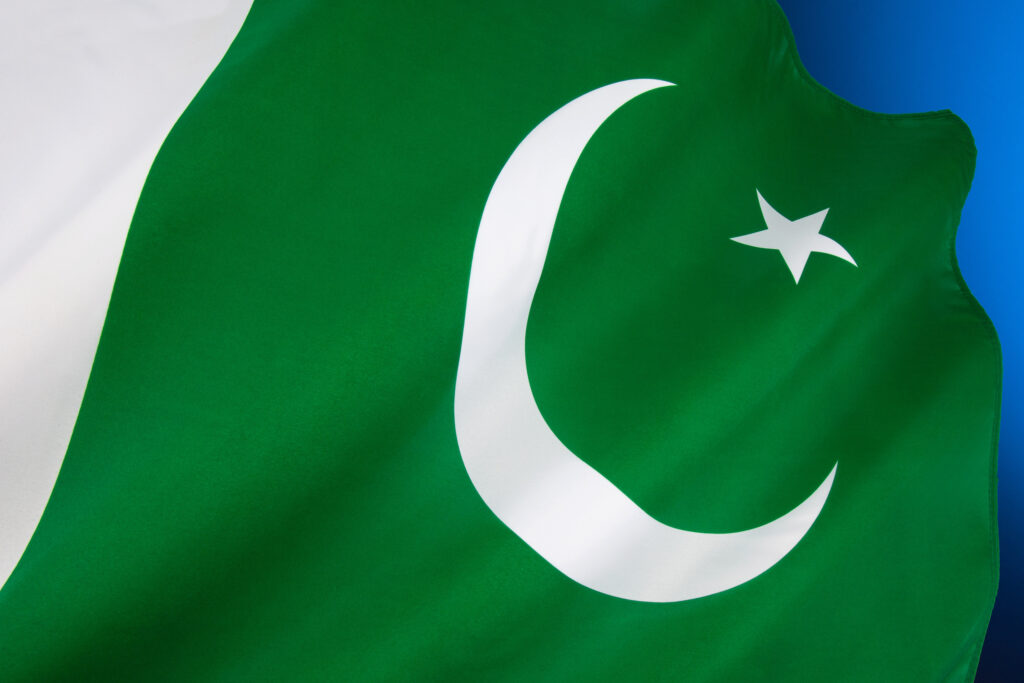Key Takeaways :
- Pakistan experiences a ”perfect” disaster on all fronts.
- The country faces not only an economic collapse but a societal one.
- Different militant groups start to take advantage of the crisis.

YEREVAN (CoinChapter.com) — Pakistan has been going through one of the worst times in history, suffering economic and natural calamities. A perfect storm has hit the troubled country, and there is no easy way out. Let’s contemplate the string of tragedies.
#1 Pakistan’s political crisis
The Pakistani political turmoil went full swing in April 2022 since Imran Khan was ousted through a no-confidence vote, which is a parliamentary procedure that is usually initiated by the opposition where a vote is held to show that a parliamentary majority does not support the policy of a leader or governing body.
On April 11, 2022, the opposition leader Shehbaz Sharif was elected the new prime minister by the National Assembly of Pakistan. Imran Khan, however, didn’t leave peacefully and initiated a wave of country-wide protests, which shook up the political stability of Pakistan even more.
The protests led to countless arrests and bloodshed, which took precious lives on both sides through 2022 and 2023.
On May 9, 2023, the National Accountability Bureau (NAB) arrested Imran Khan in Islamabad on corruption charges. After his arrest, protests started again, leading to fatalities and greatly damaging infrastructure and the country’s stability.
However, on May 11, Imran Khan was released on bail by the country’s Supreme Court.
The political instability has been going on for so long that it started to shake the fundamental structure of Pakistan itself. The future of politics in Pakistan looks grim since no side of the conflict seeks to abandon its ambitions, leading to higher societal polarization and enmity across political lines.
Madiha Afzal a fellow at the U.S analytical company Brookings Institution warned the general public about the future of country in a Deutsche Welle report by saying
“I see the crisis as one that is deepening, and it is very difficult to see a way out”
#2 Economic ills
The origins of the disaster are found in 2022 when the Russain Invasion of Ukraine made international fuel and food prices rise, significantly hurting Pakistan’s economy en masse.
Excessive external borrowing by Pakistan raised the chance of a default, causing the Rupee to fall and making imports more expensive.
In June 2022, inflation and fuel and food prices were at an all-time high of 21.32%. As a result, Pakistan started to consume moAs a result, re than ever produced.
In late January 2023, the Pakistani Rupee plunged 20% against the dollar in a few days while the government raised fuel prices by 16%. The Pakistani central bank raised its interest rate by 1% to battle the country’s highest inflation in the last ten years, according to a CNBC report.
These circumstances brought disaster to Pakistan’s economy and society since food shortages have been a constant occurrence, and fuel price hikes affect the day-to-day lives of the Pakistani people.
The cash-deprived Islamic Republic still can’t secure the $1.1 billion bailout offered by the International Monetary Fund (IMF). The IMF said the republic could hold on while the central bank informed that its foreign exchange reserves could cover only one month of imports. Sad.
This deal can help Pakistan avoid default but cannot address the underlying poor governmental practices present in Pakistan since its birth as a sovereign entity.
On April 4, the World Bank projected that 4 million Pakistanis would fall below the lower middle-income poverty line ($3.6/day).
Jihad Azour, director of the Middle East and Central Asia department at the IMF, told that Pakistan needs to take serious serious steps for normalizing its economy
“Pakistan is at a critical juncture today and a decisive action by the country is required to reform and stabilize the economy”
#3 Environmental catastrophe
In June 2022, cataclysmic monsoon floods hit Pakistan, which cost the country $15.2 billion in economic damages; the calamity made 2.1 million people homeless and killed about 2000 people.
The flood destroyed vital infrastructure and disrupted supply lifelines paramount to the Pakistani economy and people.

Government officials estimated that at least $30 billion is needed for reconstruction, equivalent to about 10% of the GDP.
The monsoon made the affected more vulnerable to water-borne diseases and skin infections. In addition, it made access to clean drinking water nearly impossible.
The Pakistani local government is accused of hoarding relief supplies. Even several NGOs halted relief operations after the provided provisions got looted.
No matter how much relief or support is provided, the recovery will be time-consuming, and Pakistan is low on time.
#4 Pakistan’s rising security threats
The Pakistani Taliban (TTP) have spread terror in Pakistan for at least a decade. They engaged in more than 150 attacks in 2023.
The Pakistani branch tends to opportunism whenever the government suffers a minor hick-up. Yet the state can’t effectively combat them since the TPB has sanctuary in Afghanistan.
Negotiations with any branch of the Taliban failed a long time ago.
Yet the government doesn’t see the Taliban as the main threat to its statehood. Still, analysts fear that if Pakistan enters a state of freefall, the TPP can take advantage, and the consequences will be horrifying.


